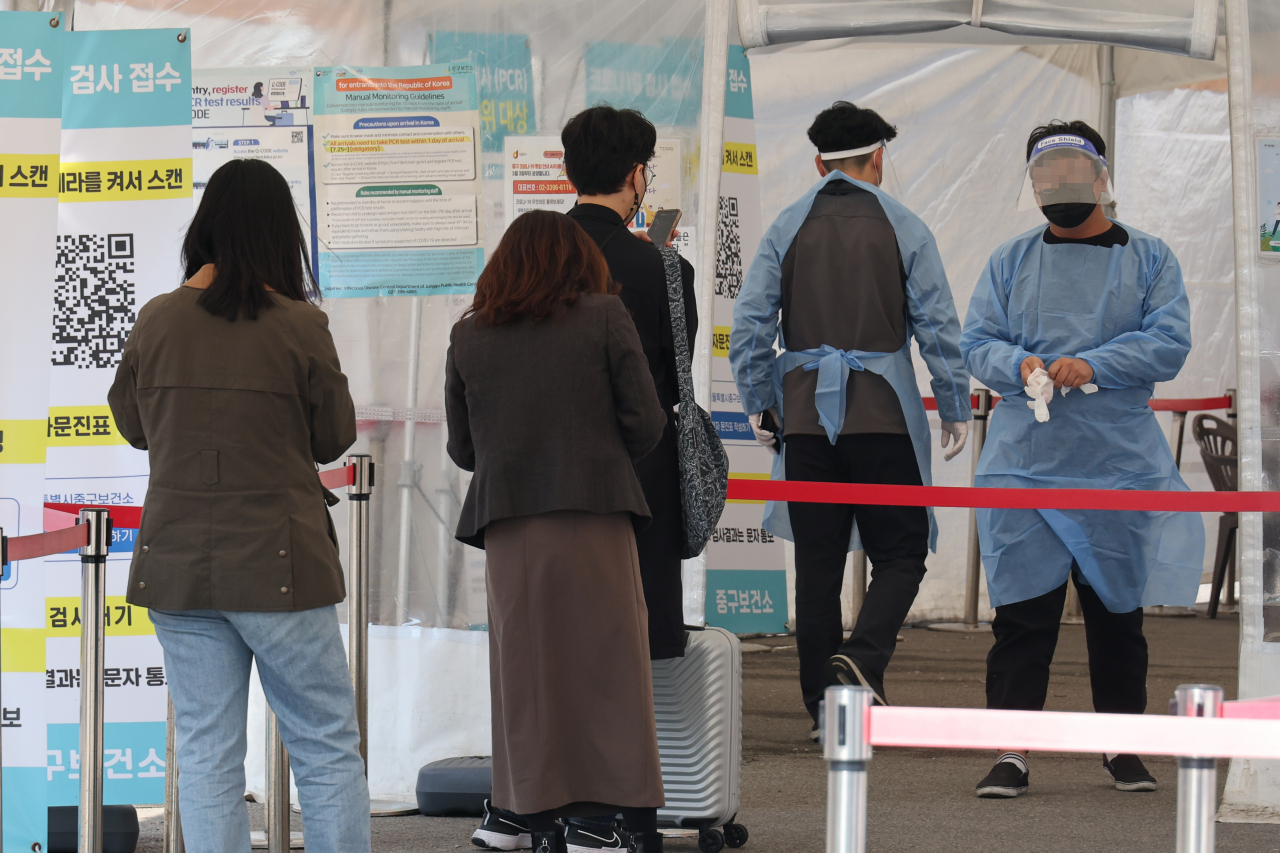Cases of new COVID-19 subvariants surge in S. Korea
By Shim Woo-hyunPublished : Oct. 28, 2022 - 17:25

The detection rate of new BA.5 subvariants in South Korea have dramatically increased over the past week, increasing the possibility of a COVID-19 resurgence during the winter season here, according to the country's health authorities Friday.
According to the Korea Disease Control and Prevention Agency data, the detection rate of two new omicron subvariants, BQ.1 and BQ.1.1, increased four times to 3.7 percent during the third week of October, from 0.9 percent a week ago.
The detection rate of BQ.1.1 posted a sixfold increase to 2.5 percent during the same period, up from 0.4 percent a week ago, the government data showed.
Experts anticipate that the two omicron subvariants will lead a resurgence in the following months.
“It is highly like that the new omicron subvariants BQ.1 and BQ.1.1 will lead the next resurgence in the country, given that COVID-19 strains widely spread in the US and Europe previously led worldwide increases in the number of infections and became dominant strains,” said Shin Sang-yeop, a senior research fellow at Korea Medical Institute.
Jung Jae-hun, a professor of Preventive Medicine at Gachon University, also said BF.7 infections will first increase, which will be later picked up by BQ.1 and BQ.1.1 inspections in the future.
Jung Ki-suck, the head of the nation's expert advisory panel on infectious diseases, however, said it is still uncertain which COVID-19 strain will become the dominant strain in South Korea.
Infections with BQ.1 and BQ1.1, sublineages of the omicron variant BA.5, have been currently found in 29 countries in the world, including South Korea.
The two subvariants have been spreading quickly in the US. The Centers for Disease Control and Prevention estimated that BQ.1 and BQ.1.1 would make up more than 22 percent of COVID-19 infections for the week ending on Oct. 22, up from 12 percent a week prior.








![[Graphic News] More Koreans say they plan long-distance trips this year](http://res.heraldm.com/phpwas/restmb_idxmake.php?idx=644&simg=/content/image/2024/04/17/20240417050828_0.gif&u=)
![[KH Explains] Hyundai's full hybrid edge to pay off amid slow transition to pure EVs](http://res.heraldm.com/phpwas/restmb_idxmake.php?idx=644&simg=/content/image/2024/04/18/20240418050645_0.jpg&u=20240419100350)








![[KH Explains] Hyundai's full hybrid edge to pay off amid slow transition to pure EVs](http://res.heraldm.com/phpwas/restmb_idxmake.php?idx=652&simg=/content/image/2024/04/18/20240418050645_0.jpg&u=20240419100350)

![[Today’s K-pop] Illit drops debut single remix](http://res.heraldm.com/phpwas/restmb_idxmake.php?idx=642&simg=/content/image/2024/04/19/20240419050612_0.jpg&u=)